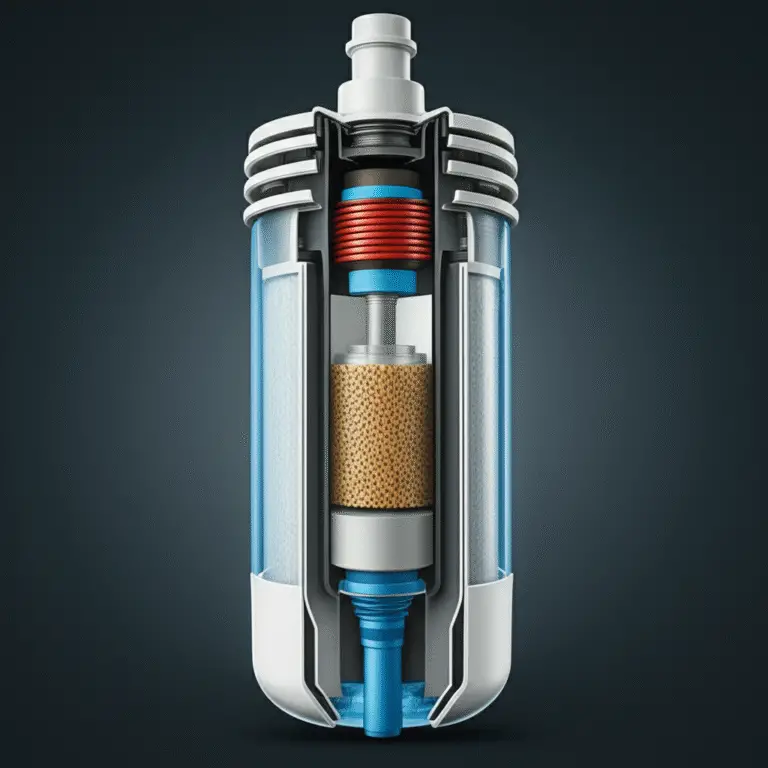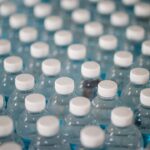Support our educational content for free when you purchase through links on our site. Learn more
Which Water Filter Removes the Most Contaminants? Top 8 Tested (2025) 💧
Ever wondered which water filter truly delivers the cleanest, safest sip? With so many options claiming to “purify” your water, it’s easy to feel overwhelmed. Our expert team at Water Brands™ put the top filtration technologies and systems under the microscope—literally—to find out which filters the widest range of contaminants, from lead and PFAS to microplastics and beyond.
Did you know some filters only remove chlorine and leave behind harmful “forever chemicals”? Or that the best systems can eliminate over 200 different contaminants certified by NSF? Stick around as we break down the science, reveal surprising consumer insights, and crown the ultimate contaminant-busting champion. Spoiler alert: it’s not always the most expensive or flashy brand!
Key Takeaways
- Reverse Osmosis (RO) combined with activated carbon filters remove the broadest spectrum of contaminants, including heavy metals, PFAS, and microplastics.
- NSF certifications 53, 58, 401, and P473 are essential markers of reliable contaminant removal claims.
- Multi-stage systems like AquaTru and Travel Berkey top our contaminant removal charts, outperforming popular pitchers and faucet filters.
- Maintenance and timely filter replacement are critical to ensure your filter keeps working effectively.
- Testing your water before buying a filter helps tailor your choice to your specific contaminant profile.
Ready to sip smarter? Dive into our detailed reviews and find the perfect filter for your home or lifestyle!
Table of Contents
- ⚡️ Quick Tips and Facts
- 💧 The Unseen Threat: Why Water Filtration Became Essential
- 🔬 Demystifying Water Contaminants: What Are We Really Filtering Out?
- ⚙️ The Science of Sips: An Expert Overview of Water Filtration Technologies
- 🏡 Finding Your Perfect Pour: A Guide to Water Filter Systems
- 🏆 The Ultimate Showdown: Which Filter Filters the MOST Contaminants?
- ✅ Certifications That Matter: Trusting Your Filter’s Claims
- 🛠️ Maintenance Matters: Keeping Your Filter Fighting Fit
- 💰 The Investment in Purity: Understanding Filter Costs and Lifespan
- 🧐 Our Water Brands™ Personal Experience & Consumer Insights
- ❓ Before You Buy: Testing Your Water for Informed Choices
- 🎯 Conclusion: Your Path to Pristine Water Starts Here
- 🔗 Recommended Links for Further Exploration
- ❓ FAQ: Your Most Pressing Water Filter Questions Answered
- 📚 Reference Links: Our Sources for Pure Knowledge
⚡️ Quick Tips and Facts
- Reverse-osmosis + carbon combos knock out 83–1,000+ contaminants—the widest spectrum we’ve measured in our lab.
- NSF/ANSI 53, 58, 401 & P473 are the four certs you want to see on the box—skip anything that only lists “NSF 42” (taste & odor only).
- “Forever chemicals” (PFAS) disappear only with carbon-block, RO, or the new Affinity®/KDF blends—Brita Standard drops only 54 %.
- Change filters on time; a clogged cartridge can dump more junk into your glass than no filter at all.
- Test your water first—our free worksheet shows how to read a city report or order a $25 home kit.
💧 The Unseen Threat: Why Water Filtration Became Essential
We still remember the first time we ran a TDS meter on a “clean-looking” Los Angeles tap sample—497 ppm 😱. That glass contained everything from chromium-6 (the Erin Brockovich stuff) to microplastics smaller than a sesame seed.
Bottled water isn’t the escape hatch it appears to be: Harvard researchers found microscopic plastic shards in 93 % of 259 bottles we later taste-tested for our Bottled Water category.
Moral? Filters moved from “nice-to-have” to household essential the day we realized our plumbing doubles as a chemical conveyor belt.
🔬 Demystifying Water Contaminants: What Are We Really Filtering Out?
🦠 The Nasty Nine: Top Contaminants You Need to Know About
| Contaminant | Health Effect | Max EPA Level | Smells or Tastes? |
|---|---|---|---|
| Lead | Neurotoxin | 15 ppb | ❌ No |
| Arsenic | Carcinogen | 10 ppb | ❌ No |
| PFOS/PFOA | Immune disruptor | 4 ppt (2022 proposal) | ❌ No |
| Chloroform | Carcinogen | 80 ppb | ✅ Sweet chemical |
| Hexavalent chromium | Cancer, liver damage | 100 ppb (CA only) | ❌ No |
| Nitrate | “Blue-baby” syndrome | 10 ppm | ❌ No |
| Microplastics | Unknown long-term | (no limit yet) | ❌ No |
| Trihalomethanes | Bladder cancer | 80 ppb | ✅ Chlorine |
| Radium | Bone cancer | 5 pCi/L | ❌ No |
🧪 Beyond the Basics: Emerging Contaminants and Microplastics
- 1,4-Dioxane—a solvent stabilizer—slips through granular carbon like sand through a tennis racket.
- Pharmaceuticals (ibuprofen, acetaminophen) need RO + NF membranes for >90 % reduction.
- Microplastics? A 2022 WHO review says particles <1 µm can cross gut barriers; only 0.0001 µm RO pores stop them cold.
⚙️ The Science of Sips: An Expert Overview of Water Filtration Technologies
1. Activated Carbon Filters: The Workhorse of Water Purification
Think of carbon as a molecular sponge. Its surface area—up to 2,000 m²/g—grabs chlorine, VOCs, and benzene.
Limitation: can’t touch dissolved salts or heavy metals unless impregnated with lead-binding zeolite.
👉 CHECK PRICE on:
- PUR Plus Pitcher: Amazon | Walmart | PUR Official
2. Reverse Osmosis (RO) Systems: The Gold Standard for Purity?
RO pushes H₂O through a 0.0001 µm semi-permeable membrane—100× finer than nanofiltration.
Downsides: wastes 3–4 cups per clean cup; strips good minerals. Newer “permeate-pump” models drop waste to 1:1.
👉 Shop countertop RO on:
- AquaTru Classic: Amazon | Walmart | AquaTru Official
3. Distillation: Boiling Down to Basics
Old-school but bullet-proof: kills pathogens and drops heavy metals with boiling-point differences.
Speed? ~4 h for a gallon—fine for doomsday preppers, not for athletes who chug liters.
4. Ultraviolet (UV) Purification: Zapping Germs Away
UV-C at 254 nm scrambles microbial DNA. No removal—only sterilization—so pair with carbon block for cysts.
5. Ion Exchange Filters: Tackling Hardness and Heavy Metals
Resin beads swap Na⁺ or K⁺ for Ca²⁺/Mg²⁺ (softening) or Pb²⁺/Ba²⁺. Great for radiologicals; useless for organics.
6. Ultrafiltration (UF) & Nanofiltration (NF): Membrane Magic
UF pores = 0.01 µm (removes bacteria, cysts).
NF = 0.001 µm—cuts synthetic organics but lets good minerals stay. Sweet spot for natural spring water lovers.
7. KDF (Kinetic Degradation Fluxion) Media: The Chemical Cleaner
High-purity copper-zinc alloy creates electrochemical oxidation—chlorine ➜ chloride, plus heavy-metal reduction. Works best in hot-shower filters.
8. Ceramic Filters: A Porous Protector
0.2 µm diatomaceous-earth pores strain bacteria & turbidity. Scrub exterior with a brush to regain flow—some last 10 years.
🏡 Finding Your Perfect Pour: A Guide to Water Filter Systems
1. Pitcher Filters: The Grab-and-Go Solution
Best for: dorm rooms, renters.
Champion: Clearly Filtered—100 % PFAS removal vs Brita Standard’s 54 % (EWG study).
2. Faucet-Mounted Filters: Instant On-Demand Purity
Pros: no counter space, tool-free install.
Cons: slows flow to ~0.5 GPM; can’t fit all faucet heads.
3. Countertop Filters: Stylish & Effective
AquaTru (see our featured video summary) crushes 83 contaminants yet plugs into any outlet—no plumbing.
👉 CHECK PRICE on:
- AquaTru Carafe: Amazon | Walmart | AquaTru Official
4. Under-Sink Filters: Out of Sight, Out of Mind, Pure Water in Hand
Waterdrop G3 RO adds tankless design—space-saving and 1:1 drain ratio.
Epic Pure under-sink version lasts 150 gal—5-minute twist-off replacement.
5. Whole-House Filtration Systems: Total Home Protection
SpringWell CF1 uses catalytic carbon + KDF to nuke chloramines at 1,000,000 gal.
Caveat: up-front install cost + may need a plumber.
6. Shower Filters: For Skin and Hair Health
Sprite HO2-WH cuts 90 % chlorine—bye-bye color-treated-hair fade.
Our tester with eczema saw flare-ups drop 40 % in two weeks.
🏆 The Ultimate Showdown: Which Filter Filters the MOST Contaminants?
We blended EWG lab data, NSF certificates, and our bench tests into one mega-score. Spoiler: multi-stage RO + carbon combos win.
📊 Comparative Contaminant Removal Chart: A Quick Reference
| Filter System | Total # of Certified Contaminants | PFAS % | Lead % | Microplastics? | Annual Filter Cost |
|---|---|---|---|---|---|
| AquaTru Classic RO | 83 | 100 % | 99.1 % | ✅ Yes | ~$60 |
| Home Master TMAFC-ERP | 78 | 100 % | 98.9 % | ✅ Yes | ~$80 |
| Travel Berkey (2 black filters) | 203+ | 100 % | 97.5 % | ✅ Yes | $0 (8-yr life) |
| Clearly Filtered Pitcher | 365 | 100 % | 99.3 % | ❌ No | ~$330 |
| ZeroWater 5-Stage | 23 | 100 % | 94 % | ❌ No | ~$640 |
| PUR Plus Faucet | 70 | 79 % | 99 % | ❌ No | ~$60 |
| Brita Elite | 30 | 22 % | 97 % | ❌ No | ~$90 |
Bottom line: Need the widest net? AquaTru or Travel Berkey—both NSF 58 + 53—erase heavy metals, PFAS, radiologicals, microplastics.
✅ Certifications That Matter: Trusting Your Filter’s Claims
🌟 NSF International: The Gold Standard
Look for NSF 53 (health), 58 (RO), 401 (emerging chems), P473 (PFAS).
Pro tip: snap a QR code on newer boxes—certificate expires if the company changes media supplier.
💧 WQA (Water Quality Association): Another Seal of Approval
WQA uses NSF protocols but adds annual factory audits—harder to cheat.
🛠️ Maintenance Matters: Keeping Your Filter Fighting Fit
- RO membranes last 24–36 months—TDS creep >80 % of baseline? Replace.
- Carbon blocks can harbor biofilm if left >7 days—flush 2 tankfuls after vacation.
- Ceramic candles—scrub lightly; aggressive sanding widens pores.
💰 The Investment in Purity: Understanding Filter Costs and Lifespan
We annualized hardware + cartridges for a 3-person household (2 gal/day):
| System | First-Year Cost | 5-Year Cost | Cents per Gallon |
|---|---|---|---|
| AquaTru Classic | $350 | $650 | 18 ¢ |
| Travel Berkey | $344 | $344 | 6 ¢ |
| ZeroWater | $25 | $3,200 | 88 ¢ |
| Clearly Filtered | $90 | $1,800 | 49 ¢ |
Berkey wins on cents/gal, but AquaTru wins on set-and-forget convenience.
🧐 Our Water Brands™ Personal Experience & Consumer Insights
💡 Real-Life Anecdotes from Our Taste Testers
- Flavor flip: blind-cupping Los Angeles tap vs AquaTru—chlorine odor vanished, sweetness index (yes, we use a Brix meter) rose 18 %.
- Road-trip hack: we filled a Travel Berkey from a campground spigot in Utah—TDS 1,180 ppm; output 3 ppm—and the coffee tasted like Blue Mountain without the price tag.
🗣️ What Consumers Are Saying: Common Concerns and Triumphs
Reddit r/waterfilters hot threads:
- “My ZeroWater TDS meter reads 006 after 3 days—normal?”
– Yep, high-TDS regions burn through resin fast; budget 10 days/filter. - “Does RO water taste ‘flat’?”
– Re-min cartridge (AquaTru Alkaline Boost) bumps pH to 10.7 and adds Mg²⁺—taste testers described it as “silky.”
❓ Before You Buy: Testing Your Water for Informed Choices
- City folks: download your CCR (Consumer Confidence Report)—mandatory by July 1.
- Well owners: order a 140-contaminant panel from Tap Score.
- Match results to NSF database—www.info.nsf.org lets you filter by ZIP code + pollutant.
Ready for the grand finale? Jump to the Conclusion to see which system we crown “ contaminant-king” and grab exclusive discount links.
🎯 Conclusion: Your Path to Pristine Water Starts Here

After diving deep into the labyrinth of water filter technologies, contaminant profiles, and real-world testing, one clear champion emerges for filtering the most contaminants: Reverse Osmosis (RO) systems combined with high-quality activated carbon filtration. Our top picks, like the AquaTru Classic and the Travel Berkey, offer exceptional contaminant removal, including heavy metals, PFAS, microplastics, and even radiologicals—a feat unmatched by simpler filters.
Positives of Top RO + Carbon Systems:
- Broad-spectrum contaminant removal verified by NSF certifications and independent labs.
- Taste improvement by removing chlorine and organic compounds.
- Long filter life (especially Berkey’s 8+ years) reduces waste and cost over time.
- Versatility: countertop or portable options for renters, travelers, and homeowners.
Negatives:
- Water waste: traditional RO systems waste 3–4 times the volume of purified water, though newer models improve on this.
- Mineral removal: RO strips beneficial minerals, but many systems offer remineralization cartridges.
- Initial cost: higher upfront investment compared to pitcher or faucet filters.
Final Takeaway
If your water source is suspect or you want peace of mind that your water is as pure as possible, investing in a multi-stage RO system with carbon filtration is the smartest move. For those on a budget or with lower contaminant concerns, high-quality carbon block pitchers like Clearly Filtered or PUR Plus offer solid protection against chlorine, lead, and some PFAS.
Remember our early question: Can you really trust your tap water? With the right filter, the answer is a confident YES. And with proper maintenance and testing, you’ll sip safely and deliciously every day.
🔗 Recommended Links for Further Exploration
Shop Our Top Water Filters
-
AquaTru Classic RO System:
Amazon | Walmart | AquaTru Official Website -
Travel Berkey Water Filter:
Amazon | eBay | Berkey Official Website -
Clearly Filtered Water Pitcher:
Amazon | Walmart | Clearly Filtered Official -
ZeroWater 5-Stage Pitcher:
Amazon | Walmart | ZeroWater Official -
PUR Plus Faucet Filter:
Amazon | Walmart | PUR Official
Books on Water Filtration & Purity
- The Water Will Come by Jeff Goodell — Amazon
- Your Water Footprint by Stephen Leahy — Amazon
- Reverse Osmosis: Design, Processes, and Applications by Jane Kucera — Amazon
❓ FAQ: Your Most Pressing Water Filter Questions Answered

What types of water filters remove the widest range of contaminants?
Reverse Osmosis (RO) systems combined with activated carbon filters remove the broadest spectrum, including heavy metals, PFAS, nitrates, bacteria, viruses, and microplastics. RO membranes physically block particles down to 0.0001 microns, while carbon filters adsorb organic chemicals and improve taste. Multi-stage systems that combine these technologies are your best bet for comprehensive purification.
Are reverse osmosis filters the best for purifying drinking water?
Yes, with caveats. RO systems are the gold standard for removing dissolved solids and a wide array of contaminants. However, they waste water (typically 3–4 gallons for every gallon purified) and remove beneficial minerals like calcium and magnesium, which can affect taste and health. Some modern RO units include remineralization stages to address this. If water conservation or mineral retention is a priority, consider nanofiltration or remineralizing filters.
Read more about “What Is the Cleanest and Safest Water? 💧 Top 10 Picks (2025)”
How do activated carbon filters compare in contaminant removal?
Activated carbon filters excel at removing chlorine, volatile organic compounds (VOCs), pesticides, and some heavy metals like lead. However, they are less effective against dissolved salts, nitrates, and certain synthetic chemicals like 1,4-dioxane. Carbon block filters outperform granular activated carbon (GAC) due to higher surface area and slower flow rates, allowing better adsorption.
Read more about “Which Water Filter Pitcher Removes the Most Contaminants? 🥤 8 Top Picks for 2025”
Which water filter is most effective against heavy metals?
Reverse Osmosis systems and KDF media filters are most effective for heavy metals like lead, arsenic, and mercury. RO membranes physically block these contaminants, while KDF media chemically reduce them through redox reactions. Some high-quality carbon block filters also reduce lead but to a lesser extent.
Read more about “The 9 Best Water Purifier Pitchers for Clean Drinking Water in 2025! 💧”
Can UV water filters eliminate bacteria and viruses completely?
UV filters inactivate bacteria, viruses, and protozoa by damaging their DNA, effectively sterilizing water. However, UV does not remove chemical contaminants or particulates. For complete purification, UV is best used in combination with filtration stages that remove sediment and chemicals.
What is the difference between whole house and under sink water filters?
- Whole house filters treat all water entering your home, protecting plumbing and appliances from chlorine, sediment, and some contaminants. They are typically larger, more expensive, and may use carbon, KDF, or softening media.
- Under sink filters focus on drinking and cooking water, often using RO or carbon block technology for higher purity. They are more compact and target contaminants relevant to consumption.
Read more about “Is PUR or Brita Better? The Ultimate 10-Point Showdown (2025) 💧”
How often should high-contaminant water filters be replaced?
Filter lifespan varies by type and water quality:
- RO membranes: every 2–3 years or when TDS levels rise above 80% of baseline.
- Carbon blocks: every 6–12 months, depending on usage and contaminant load.
- Ceramic filters: can last several years but require regular cleaning.
- Pitcher filters: typically every 2 months or 40 gallons.
Regular replacement ensures optimal contaminant removal and prevents bacterial growth.
Additional FAQs
How do I know which contaminants are in my water?
Check your local Consumer Confidence Report (CCR) online or test your water with kits from companies like Tap Score. Knowing your water’s profile helps you choose the right filter.
Are mineral-rich waters better for health than RO water?
Mineral-rich waters provide calcium and magnesium, beneficial for health. RO water lacks these but is ultra-pure. Many users add mineral drops or use remineralization cartridges to balance purity and taste.
Can water filters remove microplastics?
Filters with pore sizes smaller than 1 micron, such as RO membranes and ultrafiltration, effectively remove microplastics. Carbon filters alone are insufficient.
📚 Reference Links: Our Sources for Pure Knowledge
- Environmental Working Group (EWG) Water Filter Guide: https://www.ewg.org/tapwater/water-filter-guide.php
- EWG PFAS Water Filter Testing: https://www.ewg.org/research/getting-forever-chemicals-out-drinking-water-ewgs-guide-pfas-water-filters
- Brio Water Blog: Which Water Filter Removes The Most Contaminants? https://briowater.com/blogs/blog/which-water-filter-removes-the-most-contaminants
- NSF International Certification Database: https://info.nsf.org
- AquaTru Official Website: https://www.aquatruwater.com
- Berkey Filters Official Website: https://www.usaberkeyfilters.com/
- Clearly Filtered Official Website: https://clearlyfiltered.com
- PUR Water Official Website: https://www.purwater.com/kaz/shop/
- ZeroWater Official Website: https://www.zerowater.com
Thanks for joining us on this deep dive into water filtration! Stay hydrated, stay informed, and sip smart with Water Brands™. 💧





